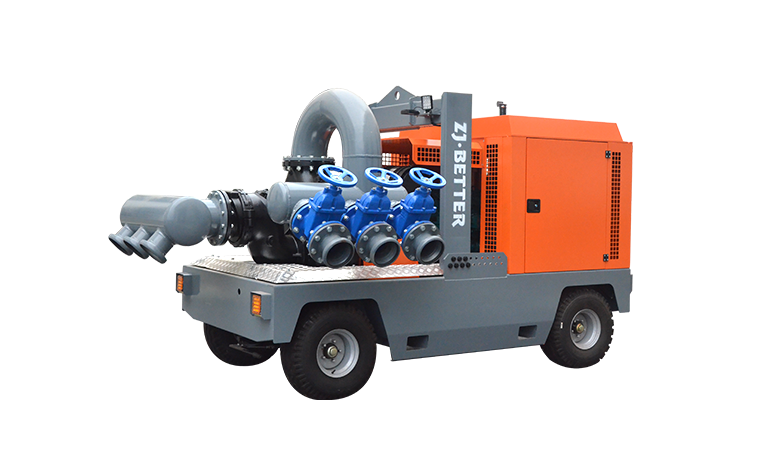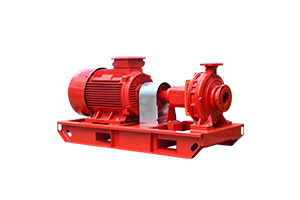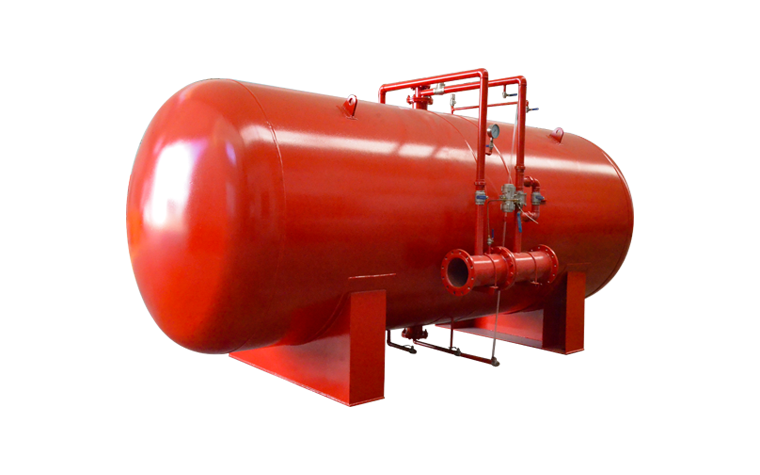-
 Oct 11, 2023Precautions for using manure pumpUsing a manure pump involves working with potentially hazardous materials and equipment, so it's essential to take various precautions to ensure the safety of workers and to prevent environmental damage. Here are some precautions for using a manure pump:
Oct 11, 2023Precautions for using manure pumpUsing a manure pump involves working with potentially hazardous materials and equipment, so it's essential to take various precautions to ensure the safety of workers and to prevent environmental damage. Here are some precautions for using a manure pump:
Training and Education: Ensure that operators and workers are adequately trained in the safe operation and maintenance of the manure pump. They should be familiar with the specific pump model being used.
Protective Gear: Provide workers with appropriate personal protective equipment (PPE), including gloves, eye protection, and, in some cases, respiratory protection, depending on the nature of the manure and the equipment used.
Ventilation: Ensure good ventilation in areas where manure pumps are used to minimize exposure to harmful gases and odors. Use exhaust fans and open doors or windows as needed.
Gas Monitoring: Install gas monitoring equipment to detect potentially dangerous levels of gases such as hydrogen sulfide (H2S) or methane. Workers should be trained on how to use these monitors and interpret their readings.
Emergency Response: Have an emergency response plan in place for dealing with spills, leaks, or accidents. Provide employees with training on how to respond to emergencies and where to find safety equipment.
Maintenance: Regularly inspect and maintain manure pumps to ensure they are in good working condition. Replace worn or damaged parts promptly, and perform routine maintenance as recommended by the manufacturer.
Safe Operating Procedures: Establish clear and standardized operating procedures for using manure pumps. Ensure that all workers are familiar with and follow these procedures. These may include startup and shutdown procedures, handling hoses and nozzles, and safe positioning around the equipment.
Secure Equipment: Ensure the pump and related equipment are properly secured and stable during operation to prevent accidents caused by equipment tipping or falling.
Electrical Safety: If the pump is electrically powered, ensure that electrical connections are safe and meet local electrical codes. Avoid using extension cords that are not rated for the equipment's power requirements.
Avoid Overfilling: Avoid overfilling manure storage tanks or lagoons, which can lead to spills and environmental contamination. Monitor and control the levels carefully.
Proper Agitation: If the pump is used to agitate manure in storage tanks, use it carefully to prevent the release of harmful gases. Follow recommended guidelines for agitation based on manure type and conditions.
Dust Control: If using manure pumps for dry or solid manure, take measures to control dust and prevent dust-related respiratory hazards.
Keep Children and Unauthorized Personnel Away: Ensure that children and unauthorized personnel are kept away from areas where manure pumps are in operation.
Environmental Compliance: Comply with all local, state, and federal regulations related to manure management to prevent environmental contamination and minimize negative impacts.
Regular Inspections: Periodically inspect manure storage structures, hoses, and connections to detect wear and tear, corrosion, or other potential issues that could lead to leaks or spills.
By following these precautions and maintaining a strong commitment to safety, you can help reduce the risks associated with using manure pumps and ensure the safe and responsible management of animal waste on your farm.View details -
 Oct 11, 2023Applicable scenarios for manure pumpA manure pump is a specific type of pump used in agriculture to handle and transfer animal waste, particularly manure, from livestock facilities to storage or disposal areas. These pumps are essential in managing agricultural waste efficiently and preventing environmental contamination. Here are some applicable scenarios for manure pumps:
Oct 11, 2023Applicable scenarios for manure pumpA manure pump is a specific type of pump used in agriculture to handle and transfer animal waste, particularly manure, from livestock facilities to storage or disposal areas. These pumps are essential in managing agricultural waste efficiently and preventing environmental contamination. Here are some applicable scenarios for manure pumps:
Livestock Farms: Manure pumps are commonly used on dairy farms, hog farms, poultry farms, and other livestock operations to move manure from animal pens and holding areas to storage tanks or lagoons.
Manure Storage: Manure pumps are used to agitate and pump stored manure from storage facilities such as lagoons or tanks. This helps mix and homogenize the manure for uniform distribution on fields as fertilizer.
Field Application: Manure pumps are employed to apply liquid manure as fertilizer on agricultural fields. This can be done using a variety of methods, such as spray irrigation, surface application, or injection.
Nutrient Management: In order to manage nutrient content and reduce environmental impact, manure pumps are used to precisely measure and distribute the correct amount of manure to meet crop nutrient requirements.
Biogas Production: Manure is sometimes used as a feedstock for anaerobic digestion to produce biogas. Manure pumps are used to transfer the waste to the digester for the conversion of organic matter into biogas.
Environmental Compliance: Manure pumps help farms comply with environmental regulations by enabling controlled and responsible handling of manure to prevent runoff and contamination of water bodies.
Waste Reduction: Efficient manure pumping systems can reduce the labor and time required to manage animal waste, making the process more cost-effective.
Odor Control: Proper manure management using pumps can help control odor emissions from livestock facilities, improving the living conditions for both animals and nearby residents.
Custom Application: Manure pumps can be adapted for specific needs, such as different types of manure (liquid, slurry, solid), distances to be covered, and the layout of the farm.
Emergency Situations: Manure pumps can be used to respond to emergency situations such as containing and cleaning up manure spills or leaks to prevent environmental damage.
Research and Education: Agricultural research institutions and educational facilities may use manure pumps for experimentation, teaching, and developing new waste management techniques.
It's important to note that the type of manure pump and its specific application may vary depending on the type of livestock, the manure consistency (liquid or solid), the farm's size, and local regulations. Proper maintenance and safety precautions are essential to ensure the safe and efficient operation of manure pumps.View details -
 Oct 09, 2023Main uses of mobile pump trucksMobile pump trucks, also known as concrete pump trucks, serve various important functions in construction and related industries. These trucks are equipped with specialized pumps that can transport and deliver concrete, among other materials, to construction sites. Here are some of the main uses of mobile pump trucks:
Oct 09, 2023Main uses of mobile pump trucksMobile pump trucks, also known as concrete pump trucks, serve various important functions in construction and related industries. These trucks are equipped with specialized pumps that can transport and deliver concrete, among other materials, to construction sites. Here are some of the main uses of mobile pump trucks:
Concrete Placement:
One of the primary uses of mobile pump trucks is to transport and place concrete at construction sites. They can reach elevated or hard-to-access areas, such as high-rise buildings or locations with limited space.
High-Rise Construction:
Mobile pump trucks are particularly valuable in high-rise construction projects, where they can deliver concrete to upper floors with precision and efficiency.
Tunnel Construction:
In tunneling projects, such as subways or underground passages, mobile pump trucks are used to pump concrete to areas deep below the surface.
Bridge Construction:
Bridge construction often involves the need for concrete placement in challenging locations. Mobile pump trucks can reach over rivers and other obstacles to deliver concrete to bridge construction sites.
Foundation Work:
They are used in building foundations, whether for residential, commercial, or industrial structures, as they can deliver concrete to the exact location where it's needed.
Road Construction:
Mobile pump trucks are employed in road and highway construction to efficiently pour concrete for various components like curbs, medians, and retaining walls.
Slipforming:
Mobile pump trucks are sometimes used in the slipforming process, which involves continuously pouring and shaping concrete to create structures like highway barriers or curbs.
Masonry and Block Filling:
In masonry work, mobile pump trucks can be used to pump grout or mortar for brick and block construction.
Residential Construction:
These trucks are not limited to large-scale projects; they are also used in residential construction for tasks like pouring concrete for driveways, patios, and foundations.
Swimming Pool Construction:
Mobile pump trucks are used in the construction of swimming pools, where they can efficiently pour concrete for pool decks and the pool structure itself.
Slope Stabilization:
In geotechnical applications, mobile pump trucks can be used to stabilize slopes and embankments with concrete or other materials.
Repair and Restoration:
Mobile pump trucks are utilized for repair and restoration projects, where they can precisely place concrete or grout to reinforce existing structures or infrastructure.
Emergency Response:
In emergency situations, such as repairing damaged infrastructure or flood control, mobile pump trucks can provide rapid access to deliver concrete or other materials.
Mobile pump trucks play a crucial role in the construction industry, helping save time and labor while ensuring accurate and efficient placement of concrete and other materials. They are versatile tools that can adapt to a wide range of construction scenarios and challenges, making them valuable assets for construction companies and contractors.View details -
 Oct 09, 2023Installation method of Mobile pumpsInstalling mobile pumps involves several steps to ensure that the pump functions correctly and efficiently. Mobile pumps are typically used for various applications, including agriculture, construction, and emergency response. Here's a general overview of the installation process:
Oct 09, 2023Installation method of Mobile pumpsInstalling mobile pumps involves several steps to ensure that the pump functions correctly and efficiently. Mobile pumps are typically used for various applications, including agriculture, construction, and emergency response. Here's a general overview of the installation process:
Site Preparation:
Choose a suitable location for the mobile pump, ensuring it is level and stable.
Clear the area of any obstacles, debris, or potential hazards.
Ensure there's adequate space for the pump and its associated equipment.
Safety Precautions:
Review safety guidelines and ensure that all personnel involved are aware of safety protocols.
Ensure proper ventilation and fire safety measures, especially if the pump is powered by a combustion engine.
Inspect the Mobile Pump:
Examine the pump and its components for any signs of damage or wear.
Verify that all necessary parts and accessories are included.
Fuel and Fluids:
Fill the fuel tank with the appropriate fuel if the pump is powered by an engine.
Check the pump's oil level and fill it with the recommended oil if necessary.
Ensure that the pump's water or fluid source is connected and ready.
Power Source:
If the mobile pump is electric, connect it to a suitable power source (e.g., generator or electrical outlet).
If it's gas or diesel-powered, ensure the engine is started and running smoothly.
Fluid Connection:
Connect the inlet and outlet hoses to the pump, ensuring secure connections and proper seals.
Ensure that the hoses are free from kinks or obstructions.
Prime the Pump:
For water pumps, prime the pump to remove air from the system. Follow the manufacturer's instructions for this process.
Ensure the suction hose is fully immersed in the fluid source.
Start the Pump:
Turn on the pump according to the manufacturer's instructions.
Monitor the pump's performance, checking for any unusual noises or vibrations.
Adjustment and Calibration:
Adjust the pump's settings and controls to achieve the desired flow rate and pressure.
Calibrate any associated monitoring instruments if applicable.
Regular Maintenance:
Establish a maintenance schedule to keep the mobile pump in good working condition.
This may include changing fluids, cleaning filters, and inspecting for wear and tear.
Shutdown and Storage:
When finished, shut down the pump following the manufacturer's guidelines.
Properly store hoses, nozzles, and any other accessories.
Ensure the pump is protected from the elements and secure for transportation if necessary.
Always refer to the manufacturer's instructions and guidelines specific to your mobile pump model. Proper installation and regular maintenance are essential to ensuring the pump's longevity and efficient operation. Additionally, adhering to safety protocols is crucial to prevent accidents and injuries during installation and operation.View details -
 Sep 25, 2023In addition to the fire pump, what other parts does the fire water supply system consist of?A fire water supply system is a crucial component of a building's fire protection infrastructure. In addition to the fire pump, it consists of various other parts and components to ensure an adequate and reliable water supply in the event of a fire. These components typically include:View details
Sep 25, 2023In addition to the fire pump, what other parts does the fire water supply system consist of?A fire water supply system is a crucial component of a building's fire protection infrastructure. In addition to the fire pump, it consists of various other parts and components to ensure an adequate and reliable water supply in the event of a fire. These components typically include:View details -
 Sep 25, 2023Reasons for the decrease in water supply of diesel engine fire pumpsA decrease in water supply to diesel engine fire pumps can have various causes, all of which should be promptly addressed to ensure the effectiveness of the fire protection system. Some common reasons for a decrease in water supply to diesel engine fire pumps include:View details
Sep 25, 2023Reasons for the decrease in water supply of diesel engine fire pumpsA decrease in water supply to diesel engine fire pumps can have various causes, all of which should be promptly addressed to ensure the effectiveness of the fire protection system. Some common reasons for a decrease in water supply to diesel engine fire pumps include:View details

.png)
.png)

.png)


